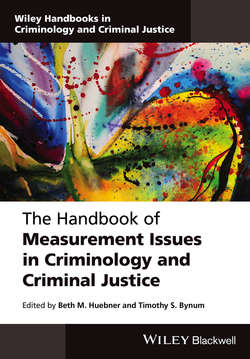Описание книги
This volume of the series was designed to provide a comprehensive primer on the existing best practices and emerging developments in the study and design research on crime and criminology. The work as a whole includes chapters on the measurement of criminal typologies, the offenders, offending and victimization, criminal justice organizations, and specialized measurement techniques. Each chapter is written by experts in the field and they provide an excellent survey of the literature in the relevant area. More importantly, each chapter provides a description of the various methodological and substantive challenges presented in conducting research on these issues and denotes possible solutions to these dilemmas. An emphasis was placed on research that has been conducted outside of the United States and was designed to give the reader a broader more global understanding of the social context of research. The goal of this volume is to provide a definitive reference for professionals in the field, researchers, and students. This volume in the Handbooks in Criminology and Criminal Justice series identifies the principal topical areas of research in this field and summarizes the various methodological and substantive challenges presented in conducting research on these issues. In each chapter, authors provide a summary of the prominent data collection efforts in the topical area, provide an overview of the current methodological work, discuss the challenges in the measurement of central concepts in the subject area, and identify new horizons emerging in data collection and measurement. We encouraged authors to discuss work conducted in an international context and to incorporate discussion of qualitative methodologies when appropriate.
